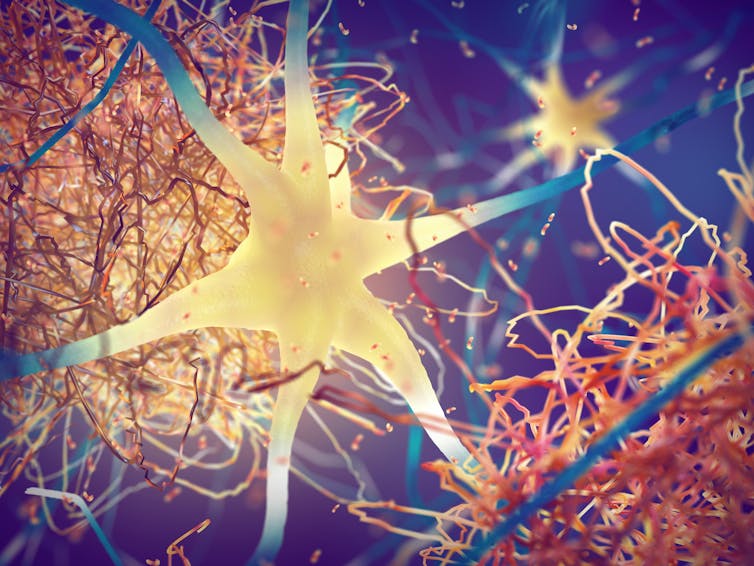Source: The Conversation – UK – By Elna Heimdal Nilsson, Professor of Aeronautical Sciences, Department of Aviation and Aeronautical Sciences, Lund University
Military aircraft – from fighter jets to transport planes – are playing a significant role in today’s unstable world. Cumulatively, the operations carried out by these fleets, from combat missions to training flights, consume large amounts of fossil fuel.
Nevertheless, military aviation is rarely included in national climate inventories. In addition to greenhouse gases, aviation also emits other pollutants such as soot and particles, which affect both climate and air quality, and have detrimental effects on human health and ecosystems.
Recently, the UK government announced that it would purchase 12 F-35A fighter aircraft, some of which will be used to reduce a backlog in pilot training. The F-35A is the standard variant of the F-35 fighter jet.
While the decision is primarily motivated by defence and alliance commitments, it also has environmental implications. Expanding training activities will increase the number of flight hours, and consequently, fuel use and emissions. Fighter jets consume large quantities of fuel per flight hour.
The combustion process in aircraft engines releases carbon dioxide (CO₂), but the impact on the climate and environment extends further: emissions of soot particles, nitrogen oxide compounds, water vapour and sulphuric compounds influence atmospheric chemistry and cloud formation.
The persistent contrails and the cirrus clouds they generate are estimated to cause an impact on the climate comparable in magnitude to the warming effect of CO₂ from commercial aviation.
Any assessment of mitigation options must therefore consider both CO₂ and non-CO₂ effects arising from aircraft engine combustion. To mitigate aviation-related climate effects, the civil aviation sector has been promoting the development of sustainable aviation fuels (SAF).
When produced from waste oils or residues, hydroprocessed esters and fatty acids (Hefa) fuels – which are forms of sustainable aviation fuel – typically achieve 50–70% lower life-cycle CO₂ emissions compared with fossil-based jet fuel. Synthetic aviation fuels known as advanced power-to-liquid (PtL) e-fuels, produced using renewable electricity, could reduce emissions by more than 80%, though they are not yet available at scale.

Wars and climate change are inextricably linked. Climate change can increase the likelihood of violent conflict by intensifying resource scarcity and displacement, while conflict itself accelerates environmental damage. This article is part of a series, War on climate, which explores the relationship between climate issues and global conflicts.
In addition to a lower carbon footprint compared to fossil fuels, SAFs have
also been shown to produce fewer soot particles during combustion, reducing the likelihood and severity of contrails and cirrus clouds.
For technical reasons, down to the specific molecular composition SAF compared to fossil based jet fuel, commercial SAFs are currently not certified as standalone fuels. However, they are available for blends of up to 50% along with fossil-based jet fuels.
The quality of the sustainable fuels is very high and there is no technical barrier to their use in military aviation. The question is: to what extent can the climate and environmental impact of military aviation operations be reduced if sustainable aviation fuels are introduced?
Sustainable fuel and the F-35
Let’s take the example of the F-35, which was the aircraft purchased recently by the UK government. Under certain conditions, the F-35 can burn five tonnes of jet fuel in a single sortie lasting an hour. For comparison, a diesel car like the Volvo V70 would, in its whole lifespan, burn an amount of fuel corresponding to just four hours of combat manoeuvring with the F-35.
Technically, the F-35 is already approved to operate on blends of conventional kerosene and certified synthetic fuels. Similar to civil aviation standards, military standards allow for blending ratios of up to 50%, depending on the production pathway.
No modifications to engines or fuel systems are required. F-35 flights that used commercially available fuel with 40% SAF were carried out by the Norwegian Air Force in early 2025.
There are no significant technical barriers to the new F-35A aircraft entering UK service to operate on commercially available SAF blends with up to 50% renewable fuel. Compatibility is not the limiting factor, but, unfortunately, the availability and cost of fuel are.
For military training flights, which may involve large numbers of sorties, SAF can therefore provide significant reductions in life-cycle greenhouse gas emissions. A 50% blend of Hefa, for instance, could cut average CO₂ emissions per flight by around one third.
Since contrails can account for a large fraction of aviation’s total climate impact, this effect is potentially important. The strategic allocation of SAF to flights that are most likely to generate persistent contrails, like training missions at high altitude in humid conditions, could amplify the climate benefit of limited SAF supplies.
The UK’s acquisition of additional F-35A aircraft will help address a backlog in pilot training, but it will also increase emissions. From both a climate and national security perspective, SAFs represent the most practical near-term mitigation option.
The F-35 is technically compatible with sustainable aviation fuels – and substantial life-cycle emission reductions are achievable this way. Additional benefits may come from reduced contrail formation. However, limitations in global SAF production and their higher costs restrict the extent to which these fuels can currently be deployed.
SAFs will not make military aviation climate neutral, but they could substantially reduce its environmental footprint at a time when both security and sustainability are pressing concerns.
![]()
Elna Heimdal Nilsson does not work for, consult, own shares in or receive funding from any company or organisation that would benefit from this article, and has disclosed no relevant affiliations beyond their academic appointment.
– ref. Sustainable fuels could reduce the climate impact of military aircraft – https://theconversation.com/sustainable-fuels-could-reduce-the-climate-impact-of-military-aircraft-264792












